Today, let’s enjoy the wonderful nebulae that turn the universe into a rainbow.
We’ll be going through six types of nebulae, starting with diffuse nebulae.
Diffuse Nebulae
Diffuse nebulae are simply nebulae with no strict boundaries. They can be emission, reflection, or dark nebulae, making them more of a broad parent category.
Since diffuse nebulae cover basically all the other types of nebulae that I’m going through, I won’t go into any more detail on them. But I can show some amazing examples!
The Orion Nebula is an incredibly bright nebula that is home to many star forming areas and protoplanetary disks! In a rural area with virtually no light pollution, the nebula can clearly be seen with the naked eye.
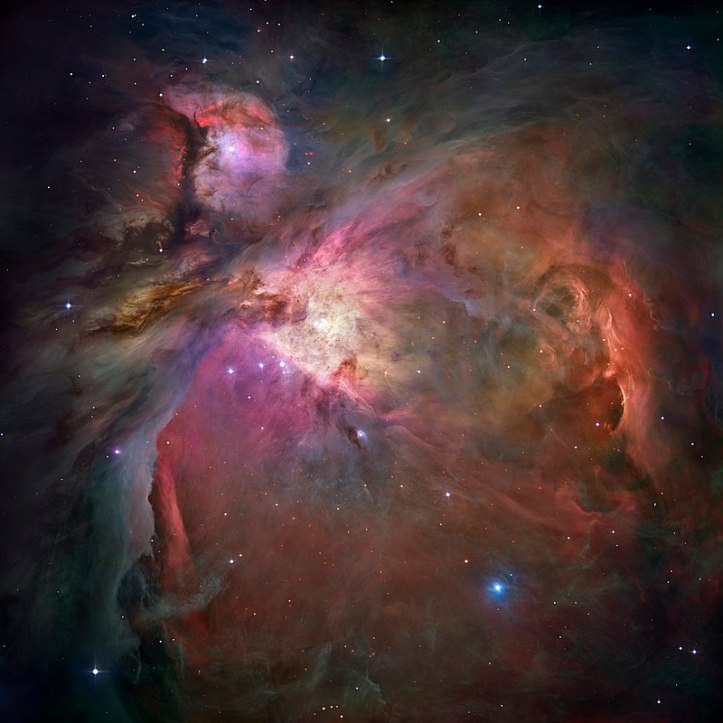
My favourite diffuse nebula has got to be the Pacman Nebula! It is viewable with your own telescope, but the sky needs to be quite dark.

Emission Nebulae
These are probably the most commonly known nebula, and pictures of them are often used in posters and articles since they’re so colourful.

An emission nebula is simply gas heated by nearby stars. The gas is heated by the stars’ ultraviolet radiation, energising atoms within it. When the gas cools down the atoms emit the energy as radiation (light).
The colour of the nebula depends on what the gas is. For example, hydrogen gas emits mostly red light. Most nebulae look red because hydrogen usually is the main gas in the nebula.
Some of the most loved nebulae are the Carina nebula, the Orion nebula, and the Lagoon nebula, but there’s just too many to write down!

Planetary Nebulae
Planetary nebulae similar to supernovae, but are tiny and made from smaller stars.
When stars of similar size to the Sun reach the end of their time as a main sequence star, they become red giants and their surface expands. But when the red giant stage ends the star collapses on itself, ejects the outer layers into space, and leaves behind a white dwarf. The outer layers are what become a planetary nebula.
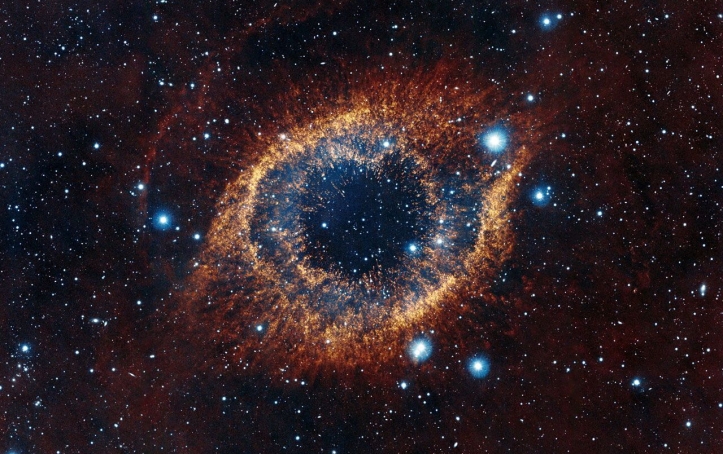
These types of nebulae are very small, and are called planetary because they look similar to planets through tiny telescopes.
Have a look at the Eskimo nebula! It’s a very orange nebula, mainly because of its high amount of nitrogen. The blues in the inner bubble are caused by hydrogen (green and red), oxygen (blue) and helium (violet).
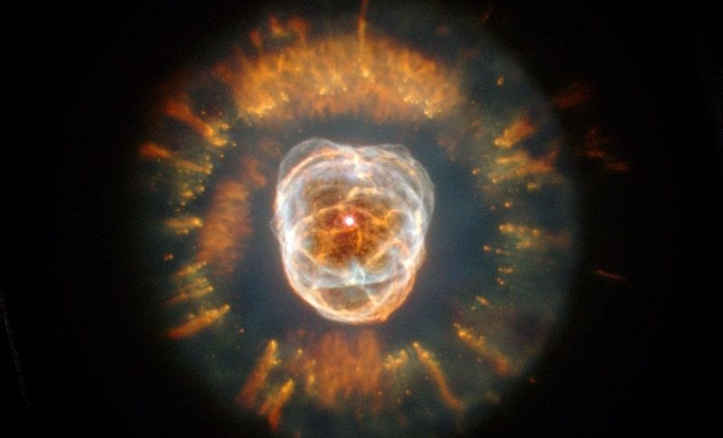
I think the most well-known planetary nebulae are the helix nebula and the cat’s eye nebula, but I believe the funniest one I’ve heard of is the Calabash nebula, better known as the rotten egg nebula!
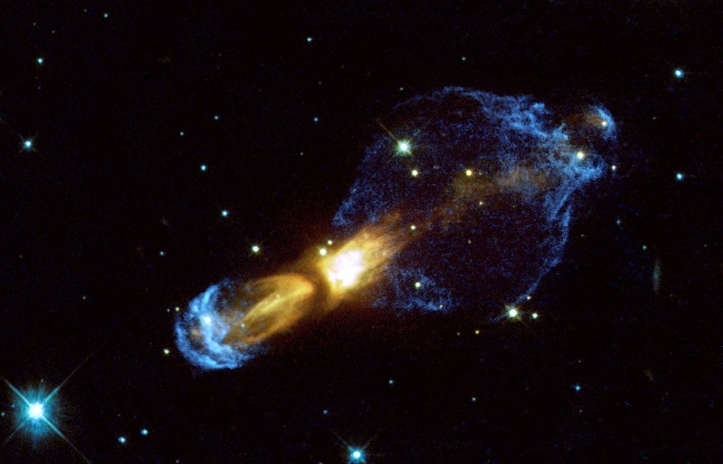
Reflection Nebulae
Instead of absorbing light and emitting it, the dust in a reflection nebula simply reflects light from nearby stars. Interestingly enough, although most emission nebulae are red, reflection nebulae tend to be blue. The reflected light is scattered when it is incident on the dust, and blue light scatters best. The efficient scattering of blue light is also the reason the sky is blue.
The Witch Head nebula is an example of this effect!

Interestingly, the scattering of blue light isn’t the only reason this nebula is blue. Quite a lot of the light incident on the nebula was already blue! Rigel is a very bright blue star, and is the nebula’s main light source.
Dark Nebulae
Dark nebulae block light from behind them. They tend to have a lot more closely-packed dust like a reflection nebula, and have an emission nebulae or stars behind them. the main reason that they aren’t reflection nebula is because of their position relative to us.
The Pillars of Creation is a well-known dark nebula, and is a small part of the Eagle nebula. It’s called the Pillars of Creation because there are star-forming regions within the nebula!
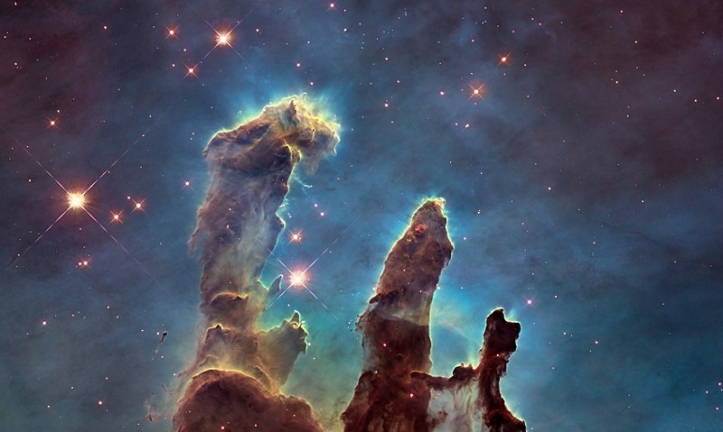
One that had intrigued astronomers for centuries was Boötes Void (Barnard 68).
Before dark nebulae were known, people believed Boötes void has absolutely nothing in it, and some *cough* history channel fans *cough* even concluded that it is the result of alien civilisations!

The temperature within the nebula is about 16K (freezing!), but it’s large enough to collapse and heat up into a star!
Supernovae
Supernovae remnants are like Planetary nebulae. They are the result of a huge star collapses on itself and tosses the surface material far away!

Let’s clear up some misunderstandings first: the supernova is the explosion, the supernova remnant is what’s left behind from the explosion.
There are many types of supernovae (that will be a post for another day), but all supernova are incredibly bright and release high amounts of energy, sometimes even more than a galaxy. Once the explosion is over, all that’s left is a supernova remnant.
The Crab nebula is the most iconic supernova, and has been observed in all parts of the electromagnetic spectrum.

A lot of nebula types overlap. Planetary nebulae are specific types of emission nebulae, and emission nebulae are often also diffuse nebulae.
Sometimes a nebula can be a mixture of types, making them harder to classify. For example, the crab nebula could easily be mistaken for a normal nebula when using only visible light. In the X-ray, only then can you see the pulsar (pulsing neutron star). A star as massive as a neutron star would have been the result of a large star collapsing and making a supernova, not a regular nebula. Thanks to our modern technology, nebula classification doesn’t have to be very difficult!
I hope you enjoyed learning about nebulae. I know I certainly did! Leave a comment on what you would like next!
Great post 🙂
LikeLike
Fantastic post! I had a pretty good understanding of what a planetary nebula is, but my knowledge about other kinds of nebulae has always been a bit nebulous.
LikeLike